King's Cup - 1929
-
-King's Cup - 1929
-
-The Aviators
The Aviators
-
Andrews, Hugh Thornley
F/O Hugh Thornley Andrews  1930
1930b 28 Jul 1907, Swansea, Glamorgan
RAF 1925-1930
He entered for the 1929 King's Cup Race, but withdrew before the start
Chief Test Pilot for Spartan Aircraft Co Ltd, Woolston, Southampton, 1 Feb 1930 to 8 Sep 1931
He made two entries for the 1930 King's Cup Race, in Bluebird G-AATS and Spartan G-AAGO, and eventually flew in the latter but was unplaced.
He then entered Spartan Arrow, G-AAWZ in the Europa Rundflug 3-week Air Race, 16 Jul-8 Aug 1930
Test Pilot for Fairey Aviation Co, Hamble, Nov 1931 to Dec 1933
RAF in WWII, then Sales Manager for Cunliffe-Owen Aircraft Ltd, 1946-52
Research: thanks to Steve Brew
-
Armour, John George Denholm
Flt-Lt John George Denholm Armour  Jack', chief test pilot for for Blackburn, later a Wing Commander. Susan Slade's cousin.
Jack', chief test pilot for for Blackburn, later a Wing Commander. Susan Slade's cousin. -
Atcherley, Richard Llewellyn Roger
F/O (later Flt-Lt) (Sir) Richard Llewellyn Roger Atcherley KBE, CB, AFC
 photo: 1929, aged 25
photo: 1929, aged 25Batchy', twin brother of David, b. 12 Jan 1904
1929 Schneider pilot and later Air Marshall in the RAF and Chief of Air Staff for the Pakistan Air Force. Put on a bit of weight later on, and ended up as Sales Director for Folland Aircraft.
Died 18 Apr 1970.
-
Bailey, Mary
Hon. Lady Mary Bailey
Royal Aero Club Certificate No. 8067 (26 Jan 1927) 1927, aged 37
1927, aged 37
1930, aged 40
The Hon. Mary Westenra, b. 1 December 1890 in London but brought up mainly in County Monaghan, Ireland.
Her family's home was Rossmore Castle, which was a grand affair built in the 1820s, with turrets, a vast drawing room and servants' quarters, not to mention about 20 cottages on the estate:
 www.monaghan.ie/museum
www.monaghan.ie/museumHere she is, with her brother Willie, and parents (Mittie and Derry) on a set of steps by the house, in 1913:
 Throttle Full Open
Throttle Full OpenI visited County Monaghan in 2014 and asked in the local museum if they knew where the house was. 'Oh yes' they said, 'but it was demolished forty years ago'. It seems that it became severely infested with dry rot in the 1940s, was abandoned and, indeed, demolished in 1975.
Anyway, here's all that's left of it now:


Mary married South African mining magnate and white suprematist politician Sir Abe Bailey in September 1911 (so, she was 21, he was nearly 47; his first wife had died in 1902 and he already had two children). They then had five more children - 2 boys and 3 girls.
She learnt to fly at the London Aeroplane Club in 1926. She was the first woman to fly across the Irish Sea 'by the long route' from Chester to Dublin, the following August.
The following March (1928) she began a solo tour to Cape Town, via Malta and then Cairo. Here, her plane was locked away by order of the Governor-General of the Sudan to prevent her from continuing alone, so she contacted Dick Bentley (who had flown to the Cape a few weeks before) to escort her in his own aeroplane over the "dangerous area of the southern Sudan". She then crashed in Tanganyika, writing off her aeroplane (she said it was her fault), but Abe made arrangements for a replacement Moth to be delivered from Pretoria and she continued, despite having 'flu. Abe was there to meet her when she arrived at the end of April.
The return journey was made via the western 'French' route - the Belgian Congo, Angola and the French Congo. She finally arrived back at Croydon on 16 January, 1929, 10 months after she left. It was "undoubtedly one of the finest performances ever put up by a woman pilot."
Lady Bailey was "so modest, so vague and so charming", and was "surprised that anyone should make a fuss about her journey".
A Director of National Flying Services in 1929, (with Frederick Guest, Colonel the Master of Sempill, Alan Cobham, etc); she was also awarded the Brittania Trophy by the Royal Aero Club, and then made a Dame of the British Empire in 1930 for "services to aviation".
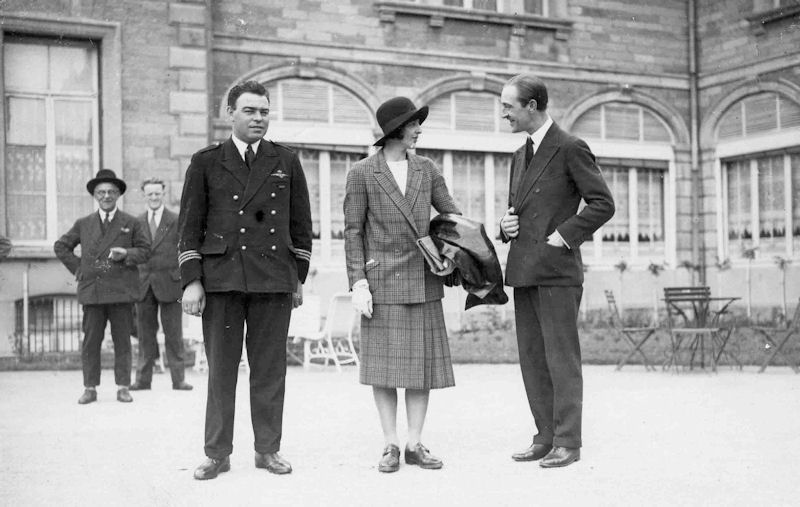
At the Chateau d'Ardennes in 1930

She was a guest at Amelia Earhart's reception at the Royal Aero Club in May 1932.
In early 1933 she gave everyone a scare by disappearing for several days on another solo flight to Cape Town; thankfully, she had only got lost, run low on fuel and landed safely in the Sahara. [Bert Hinkler, who disappeared at about the same time, was killed in the Alps]. She then flew back to England and almost immediately went down with a bout of typhoid, but recovered in time to compete in the King's Cup later in the year.

After that, she concentrated on looking after their horses, giving and attending loads more balls and receptions, and marrying off their many children.
When Abe died in 1940, she settled near Cape Town (still keeping a house in Rutland) and died there 29th August 1960 aged 69.
Lady Mary's aeroplanes were:
a 1926 DH.60 Moth (G-EBPU),
a 1927 DH.60X Moth (G-EBSF, the one she crashed in Tanganyika),
the replacement DH.60X Moth (G-EBTG, which Abe bought in Nairobi);
a 1928 DH.60G Gipsy Moth (G-AABN);
a 1929 DH.60G Gipsy Moth (G-AAEE) and
a 1930 DH.80A Puss Moth, G-AAYA.
-
Broad, Hubert Stanford
Capt Hubert Stanford Broad MBE AFC
 photo: 1930, aged 33
photo: 1930, aged 33b. 18 (or 20) May 1897
shot through the neck in WWI by one of Richtofen's Red Circus pilots; [c.f. Angus Irwin]; second in Schneider 1925, to Jimmy Doolittle.
In 1928, he spent possibly the most boring 24 hours of his life by beating 'all existing figures' for long endurance flights in light aeroplanes (unfortunately there was no official 'record' to beat as such, the FAI not recognising such things). His log makes, um, rivetting reading:
--0--0--0--0--0--0--0--0--0--0--
5:30pm: Hendon
7:40pm: Gloucester
8:30pm: Coffee and sandwiches
11pm: Over Central London, 3,000ft; watched theatre crowds leaving
Midnight to dawn: Remained over Edgeware
2:30am: second meal
4:10am: First signs of dawn
5:10am: Biggin Hill. Saw night bomber in air
...
Noon: Stamford. Very sleepy
4:30pm: Ipswich
--0--0--0--0--0--0--0--0--0--0--
Having trimmed the controls, Hubert settled down and read 3 complete novels 'to relieve the boredom'.
When he finally landed, he he said that he was very stiff with cramp, and promptly went home to sleep. His Moth still had 12 gallons of fuel, so it could have kept going for another 4 1/2 hours...
He was named as co-respondent in Beryl Markham's divorce in 1939.
de Havillands test pilot until 1935 (Bob Waight succeeded him) - broke the world's speed and height records for light aircraft in the original monoplane Tiger Moth, then joined RAE Farnborough; Hawker test pilot post-WWII; died 1975
FLIGHT MARCH 28TH, 1946
No. 2. CAPT. H. S. BROAD, Senior Production Test Pilot, Hawker Aircraft Co.
FOR sheer wealth of flying experience it is doubtful whether there is another pilot in the world to equal Hubert Broad. He has flown everything from diminutive single-seaters to multi-engined--bombers, and including a number of out-and-out racing aircraft. His logbooks, of which he has filled some nine or ten, total over7,500 hours' flying time and 182 separate types. These are honest types—not modifications or different mark numbers of the same aircraft. Many of these he has also flown as seaplanes. Broad, at the age of nineteen, learnt to fly at the Hall School of Flying at Hendon in 1915. The aircraft on which he made his first flight (there was no dual, a pupil did straights across the airfield until he felt it was safe to do a circuit)was the single-seater Caudron with35 h.p. Y-type Anzani engine. Believe it or not, with this tiny horsepower the Caudron occasionally was made to stagger into the air with two people on board, but the passenger had to sit on the wing by the side of the nacelle.
Early Days
The end of 1915 found Broad in the R.N.A.S. at Eastchurch, and he was on the very first course at Cranwell, which was then a R.N.A.S. establishment rejoicing in the name of H.M.S. Daedalus. His first tour of duty at the front was with No. 3 Squadron at Dunkirk. He was among a number of pilots lent by the R.N.A.S. to the R.F.C. No. 3 Squadron flew Sopwith Pups, and it was while he was on one of these, escorting a bombing raid by 90 h.p. R.A.F.-engined B.E.s, that he was shot through the neck by one of Richtofen's later Goering's—Red Circus pilots.
On recovery he spent a while as an instructor at Chingford and then went for his second tour of operations with No. 46 Squadron, who flew Sopwith Camels. The end of the 1914-18 war found Broad instructing at the Fighter Pilots' Flying School at Fairlop.
Peace found him, as it found so many other young fellows ,with the ability to fly aircraft superbly and no other means of making a living. But a good living could be made by joy-riding in the early 1920's. First he joined the Avro Company, who were running joy-riding in a fairly big way, and in 1920 went to the Adiron Lakes in America with two Avro 504 seaplanes. These two aircraft saw their last days in Long Island, where they were completely wrecked by an autumn gale.
By the next year he was back in England competing in the Aerial Derby air race round London on a Sopwith Camel. He finished 6th.In October, 1921, Broad joined de Havillands. Those who know this great concern now will smile to learn that when it started in those days it consisted entirely of two fabric hangars and a hut at Stag Lane. If memory serves, the capital of the company at that time was £100.
The D.H. series numbers, which started in the Aircraft Manufacturing Co. Ltd., were carried on in this new firm, and Broad flew every one of the D.H. designs from the D.H.27 to the D.H.90. In the same period he did a lot of test flyingfor other aircraft constructors.
He did the W.10, Handcross, Hendon, and some others for Handley Pages, the Parnall Pipit and the Saunders A. 10 fighter. On the Gloster Grebe he ran into wing flutter for the first time (this trouble, in those days, was on a par with the compressibility troubles we have now).
Seaplane testing
Another big job he did was most of the development work on the Gloster II and III racing seaplanes. Over a period I used to go with him to Felixstowe regularly. As a Press man I was forbidden the precincts of the R.A.F. seaplane station, but there was a perfectly good Great Eastern Railway pier alongside the station. I used to climb over the fence and watch the proceedings from the pier head. Broad nearly lost his life there one day in October,1924. As he was landing the Gloster II a forward strut to the floats collapsed, and the aircraft turned completely over. Mrs. Broad was watching from the shore, and it seemed a very long time before Hubert appeared on the surface.
In 1925 Hubert Broad flew the Gloster III racing seaplane in the Schneider Trophy contest which was held that year over Chesapeake Bay in America. This was the race in which Henri Biard, flying the SupermarineS.4—the true forerunner of the Spitfire—crashed in the water with wing flutter. Broad finished this race second to Jimmy (now General) Doolittle. That must have been a vintage generation, because many names from that period have found their way into the high-spots of this last war.
With the advent of the D.H. Moth in all its variants, Broad was to be seen performing aerobatics at most flying club meetings and entering many of the races. These included the King's Cup Race, which he won in 1926. He was flying a delightful Cirrus I Moth, which was a study in ivory and red. His average speed over the whole732 miles was 90.4 m.p.h. His piece de resistance in aerobatics was a perfectly formed big loop, the base of which was only some 150ft from the ground. It was a joy to behold, but very dangerous to perform. Broad had sufficient sense to realise this and sufficient courage to stop doing it.
"Hooked"
It was during an aerobatic show that Hubert had his closest shave in a life packed with incident. And it was so simple. Flying a D.H. Tiger Moth with no one in the front seat, he did a slow roll—a stunt at which he was a master. The safety belt in the empty cockpit was loosely done up. While the Moth was inverted the belt hung down and, as the aircraft turned the right way up again, the belt came back over the joy-stick. The result was that Broad had only about 1 1/2 inches of stick movement; but, nothing daunted, he made a sort of tail-up, seaplane landing. In this connection it is to be remembered that there were no lovely 2,000-yard runways on which to this sort of thing. In those days there was not a single runway available in Britain; not even for the take-off of over-loaded aircraft for long-distance records!
Another unhappy moment occurred when he found the tail trim (the incidence of the whole tailplane was adjustable)of a D.H.34 had been connected in reverse. By a good deal of jockeying he managed to get into Northolt. On yet another occasion a careless mechanic left a screwdriver jammed in the chain and sprocket of the rudder actuating gear. This necessitated a down-wind, crosswind, finishing up into-wind landing at Hendon airfield, because that was a bit bigger than Stag Lane.
One of the prettiest little aircraft he ever flew was the original D.H. Tiger Moth monoplane. This was tailored exactly to fit Broad. Physically he is not of big stature and few other pilots could get into the machine. In the front of the cockpit was a bulkhead which had two holes just large, enough for the feet to be threaded through, and these holes had to be padded with sorbo rubber so that Broad's shins did not get barked while landing and taxying. Springing was almost non-existent. Span was22ft 6in and length only 18ft 7m.
In August, 1927, on this machine he broke the world's record for light aircraft for both speed and height. For the former the figure was 186.47 m.p.h., he having taken19 min 59 sec to cover the 10 km, and for altitude he reached 20,000ft in just 17 min. A year later he took two more world's records on the D.H. Hound.
In 1935, after 20 wonderful years of service, he left de Havillands and later did some flying for the Air Registration Board. From here he went to the Royal Aircraft Establishment and finally joined Hawkers to be in charge of all their production testing at Langley. He will be 50 in a matter of a few weeks, yet every day sees him at oxygen height testing Tempest IIs. As he says, he has gone from 35 h.p. in the Anzani to over 3,000 h.p. in the Centaurus and Sabre VI, and from 2 ½ lb/sq ft in the Caudron to 40 lb/sq ft in the Tempest II.
-
Bruce, T B
Flt-Lt T B Bruce

photo: 1930
-
Brunton, Maurice
Mr Maurice Brunton
b. 6 Sep 1906, Preston, Lanc
RAF 1925-38;
Pilot for Imperial Airways, 1939
d , 21 Nov 1971 - London
Research: thanks to Steve Brew
-
Butler, Alan Samuel
Mr Alan Samuel Butler J.P. 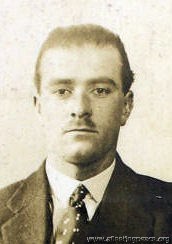
photo: 1921, aged 23
Chairman of de Havilland; the story goes that in 1921 he asked the one-year old de Havilland Aircraft Company to build a fast two-passenger touring aeroplane to his specification,
and stumped up £3,000 for them to do it. The money saved the company from extinction and they appointed him to the board of directors forthwith. He held the position until he retired in 1950.
The aeroplane became the DH37, (which he named, firstly, 'Sylvia' after his sister, then, rather diplomatically, 'Lois', after his wife, q.v.), which he entered in the very first King's Cup Race in 1922 and again in 1924, coming third.
He and Lois set up a world speed record of 120mph for 1000 km in 1928, and they also flew to Cape Town together .
Entered the MacRobertson Race in 1934 (assigned No 59) but didn't take part.
Was still aviating in 1970.
-
Butler, Lois
Mrs Lois Butler
Royal Aero Club Certificate 8634 (14 Jun 1929)
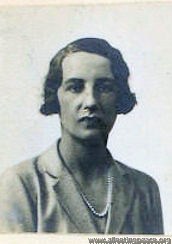
Née Reid
b. 3 Nov 1897 in Montreal, Canada; the "beautiful" [so said Harald Penrose] wife of Alan Butler.
(later, the 'Flying Grandmother', oh well...)
Her first husband having died in 1923, she married Alan Butler in 1925; together they had a daughter and a son.
15th in the Women’s Combined Alpine Skiing at the 1936 Winter Olympics, skating for her native Canada (although she was a member of the British Team before that).
 King's Cup 1933
King's Cup 1933Post-WWII, the Butlers moved to Rhodesia and bought a tobacco farm, but eventually moved back to Studham Hall, Bedfordshire.
She owned a 1930 DH.80A Puss Moth G-ABGX, which was sold in France in December 1934, re-registered as F-AMRX and whose registration was finally cancelled in 1936.
d. 17 Aug 1970 in Piraeus, Attiki, Greece from a heart attack while on holiday, and is buried in Studham.
-
Cazalet, Robert George
Capt Robert George Cazalet  photo: 1927, aged 35
photo: 1927, aged 35 -
Chalmers, John William Pender
Mr John William Pender Chalmers

photo: 1928, aged 40
born in Morro Velho, Brazil -
de Havilland, Geoffrey
Capt (later Sir) Geoffrey de Havilland O.M. K.B.E A.F.C Hon.F.R.Ae.S
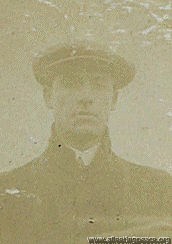 1911, aged 29
1911, aged 29 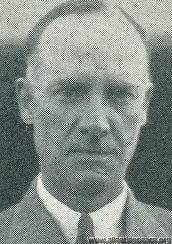 1936, aged 54
1936, aged 54Geoffrey de Havilland - Wikipedia has his story -
Dickinson, Vincent Neville
Mr Vincent Neville Dickinson Father: Frank Dickinson, a Merchant, Mother: Sarah Jane [Bayley]
2nd-Lieut, RFC, RAF in WW1; Pilot Officer from 20 Nov 1923
He was one of two pilots who inaugurated the Belfast to Liverpool Daily Air Service in April 1924 (the other was Alan Cobham), He started out at 05:30am in his D.H. 50, but the weather was so bad he could get no further than Southport Sands.
m. 18 Nov 1923 in Richmond-upon-Thames, Marjorie Winifred [Lloyd-Still] (1 daughter, Katheen b. 1926)
Elected a Member of the Royal Aero Club in June 1925
Formed Aero Hire Ltd in 1927, based in Birmingham, to "establish, maintain and work lines of aeroplanes, seaplanes and taxi-planes and aerial conveyances, etc. (later co-owned, with L W van Oppen,)
Competed in the King's Cup in 1929, flying G-EBTH, a DH.60X Moth. He was forced to retire at Blackpool.
Hon. Secretary and Chief Instructor, Hertfordshire Flying Club, St Albans in 1932
He owned G-EBZZ, a 1928 DH60 X Moth, which crashed at Stansted Abbots 23 Jun 1934
One reported accident:
- 14 Mar 1939, flying G-AEDD, a 1936 Avro 504N belonging to Publicity Planes Ltd; he hit a fence and crashed at Calderfields Farm, Walsall, after engine failure.
Address in 1939: 'Muree', Queen's Rd, Sandown, Isle of Wight
Briefly (5 Jun to 5 Jul 1940) a pilot for the Air Transport Auxiliary (ATA)
Sub-Lieut in the Royal Navy from 15 Jul 1940
Address in 1962: 10 Oakwood Rd, Rayleigh, Essex
d. 3 Sep 192 - London
-
Fielden, Edward Hedley
Flt-Lt (Sir) Edward Hedley Fielden KCVO CB DFC AFC 
'Mouse', b. 1903. Prince of Wales' (i.e. Edward VII's) pilot, later Captain of the King's (and Queen's) Flights until 1962.
DFC, 1943: "This officer has flown on various operational missions, some of a most hazardous nature. He has displayed a high standard of operational efficiency, setting an example which has contributed materially to the high morale of the air crews under his command. His great organising ability has proved a valuable asset.”
Edward Fielden (RAF officer) - Wikipedia
d. 1976
-
Forbes-Sempill, William (Lord Semphill)
William Forbes-Sempill, 19th Lord Sempill AFC
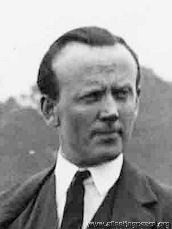 1930
1930Ah... yes... the aviation pioneer, chairman of the Royal Aeronautical Society, right-wing sympathiser and occasional spy (for the Japanese), who was motivated by his 'impetuous character, obstinacy, and flawed judgement', rather than money.
-
Grey, Phillips Patrick
Mr Phillips Patrick Grey b. 1 Jul 1903, Bakewell, Matlock, Derbys,
RAF 1924-29
Flying Instructor, de Havilland, Stag Lane, 1929
RAF, 1940-45
d. 29 Apr 1989 - Hindhead, Surrey
Research: thanks to Steve Brew
-
Hope, Walter Laurence
Capt Walter Laurence 'Wally' Hope  1917, when a 2nd Lieut in the RFC, aged 20
1917, when a 2nd Lieut in the RFC, aged 20 1928, aged 31
1928, aged 31Technical director of Air Freight.
b. 9 Nov 1897 in Walton, Liverpool
Aged 18, and described as a "trick-cyclist", he was summoned in 1915 for committing a breach of the Realms Act by taking a photograph of one of his Majesty's ships at Barrow; he pleaded not guilty, admitted that he was carrying a camera, and was fined £5.
A close friend of Bert Hinkler, he made an extensive search over the Alps at his own expense when Bert went missing on his fatal flight in 1934, but then sued the Daily Mirror when they published their hair-raising account of his exploits, "Captain Hope's Ordeal in the Alps". He said there was "not one word of truth in it."
m. 1920 Marjory [Stone]
Three-time winner of the King's Cup Race (1927, 1928 and 1932)
In the 1926 King's Cup race, "he had to descend at Oxford while racing for home in the last lap with a small “airlock" in his petrol pipe, which effectually put his tiny Moth machine out of the running. He landed in a small field - so small that he found it impossible take off again when his minor trouble had been rectified without pushing his plane through three fields to a broader stretch of country, where he could rise. By this time it was so late that he decided that would abandon the race and go on at his leisure to Hendon.
Interviewed at his home in Hendon yesterday, Mr. Hope said: “The only thing that I am really disappointed about is that I feel sure that if this trifling mishap had not occurred I should most certainly have won. For three laps I was racing neck and neck with Captain Broad, with an aggregate speed equal to his - between 90 and 91 m.p.h." Daily Herald
At the end of the 1928 race, "Thinking all was over he proceeded to loop and stunt before landing, and having landed switched on his well known winning smile. Suddenly there was a terrific hooting, and Sir Francis McClean in his white Rolls-Royce came tearing across to tell Hope he had not crossed the finishing line... Within 30 seconds Hope was in the air again, discovered the finishing line, landed, and again switched on the winning smile fortissimo." C G Grey
Entered for the MacRobertson Race in 1934 (No 24) but didn't take part in the end.
m. 1954 Hilda L [Stone or Hunt]
d. Oct 1979 - Isle of Wight
-
Irving, John Duckworth
Mr John Duckworth Irving  1926, aged 38
1926, aged 38Born in Xlanga, S Africa but living in Northumberland; 'a shopkeeper'
Page 1 of 2




